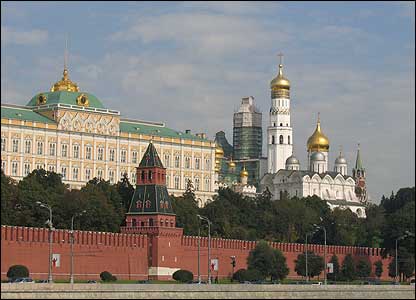
EXPERTS DOUBT THAT RUSSIA’S POPULATION DECLINE CAN BE HALTED
Publication: Eurasia Daily Monitor Volume: 5 Issue: 80
By:

Health and Social Development Minister Tatyana Golikova told her ministry on April 25 that over the past 15 months, Russia had experienced what she called “a real demographic explosion,” with more than two million children born between January 1, 2007, and April 1, 2008. Golikova said that not a single developed country had experienced such a baby boom, which she attributed to the Russian government’s efforts. “We are proud of the fact that citizens responsibly approached the future of the county [and] reacted properly to the measures to stimulate the birthrate,” she said. She went on to predict that measures to accelerate the birthrate and develop an obstetrics service would help increase the rate from 11.3 per 1000 people in 2007 to 11.9-12 this year, while decreasing the infant mortality rate from 9.4 per 1000 in 2007 to 9.9 per 1000 this year (Kommersant, April 28).
As Kommersant noted, the issue of demography had become one of the government’s top priorities since President Vladimir Putin’s annual address to the nation in 2006, in which he called Russia’s demographic crisis “the most acute problem facing our country today” (www.kremlin.ru, May 10, 2006). In 2007 Putin signed a concept for demographic policy through 2025 (Kommersant, April 28) and approved a series of maternity incentives, including higher payments for mothers of children under 18 months, benefits for unemployed mothers and payments of about $9,500 for the birth of two or more children (RIA Novosti, February 1).
The Health Ministry has set a goal of halting Russia’s population decline by 2011, stabilizing the number at 143 million people (www.kommersant.com, April 25). This, however, will be no easy task, even with the rebound in birthrates.
First of all, as Golikova herself noted, while the number of births increased by two million, over the last four months, 48 of Russia’s 89 regions–that is, nearly half–registered increases in the deaths of infants younger than a year old. Golikova called on the health authorities in Russia’s regions to take “urgent measures” to deal with infant mortality (www.newsru.com, www.kommersant.ru, April 25).
In addition, Russia’s mortality rates remain very high, especially among males. As Golikova pointed out, the main causes of death among Russia’s able-bodied population are cardiovascular illnesses and traffic accidents. Russia has 10 times more traffic accidents per vehicle than Germany or Britain, with some 36,000 Russians dying in such accidents annually (Reuters, January 27, 2007). Golikova added that the mortality rate was “creating the demographic crisis” and was the main reason why life expectancy in Russia was “unacceptably low for a developed country.”
Given such problems, experts both inside and outside Russia are skeptical that the goal of halting Russia’s population decline by 2011 is achievable. Leonid Rybakovsky, chief research fellow at the Russian Academy of Sciences’ Institute for Socio-Political Research, said that while Russia’s birthrate had “sharply increased,” partly because of the government’s actions, he doubted that the demographic growth would last for very long. The reasons for the rise in the birthrate, he said, were, first and most importantly, the growth in the number of women of child-bearing age, including women who were born in the 1980s, when the birthrate was high. The other reasons for the rise in the birthrate were “the stabilization of the situation in the country and additional benefits and payments, including those to expectant mothers.”
Rybakovsky warned, however, that the current positive demographic situation would continue for another three to five years at the most. “Then women born in the 1990s will reach reproductive age and the number giving birth will decrease,” he said. “Particular difficulties will arise after 2015-2016.” Valery Yelizarov, head of the Center for the Study of Population at Moscow State University, predicted that there would be a slump in the birthrate in three to four years. “The number of women of childbearing age will decrease; there will no longer be ‘postponed’ children,” he said. “In order to counterbalance the situation, effective measures, not half measures, are needed” (Kommersant, April 28).
Some Western experts, however, doubt that measures taken by the Russian government can reverse the trend. As Nicholas Eberstadt, a researcher at the American Enterprise Institute, and Hans Groth, a Pfizer global health fellow and managing director of Pfizer-Switzerland, recently wrote in the Wall Street Journal: “Unfortunately, there is not a single example from modern history where pro-natal policies have been able to achieve a sustainable demographic reversal. Outside of Russia, few demographers anticipate depopulation will actually halt over the coming generation.” According to Eberstadt and Groth, Russia’s working-age population (aged 15-64) is projected to shrink by 19 percent between 2005 and 2030 compared with about 7 percent in Western Europe (Wall Street Journal, April 25).
Murray Feshbach of the Woodrow Wilson International Center for Scholars recently predicted that the number of Russian women aged 20 to 29, the prime childbearing years, would start to decline in about 2013, while the number of deaths in Russia from AIDS, tuberculosis and hepatitis C would rise sharply over the next five to ten years. This meant Russia might still be headed for a population crash, Feshbach said (AP, April 5).




